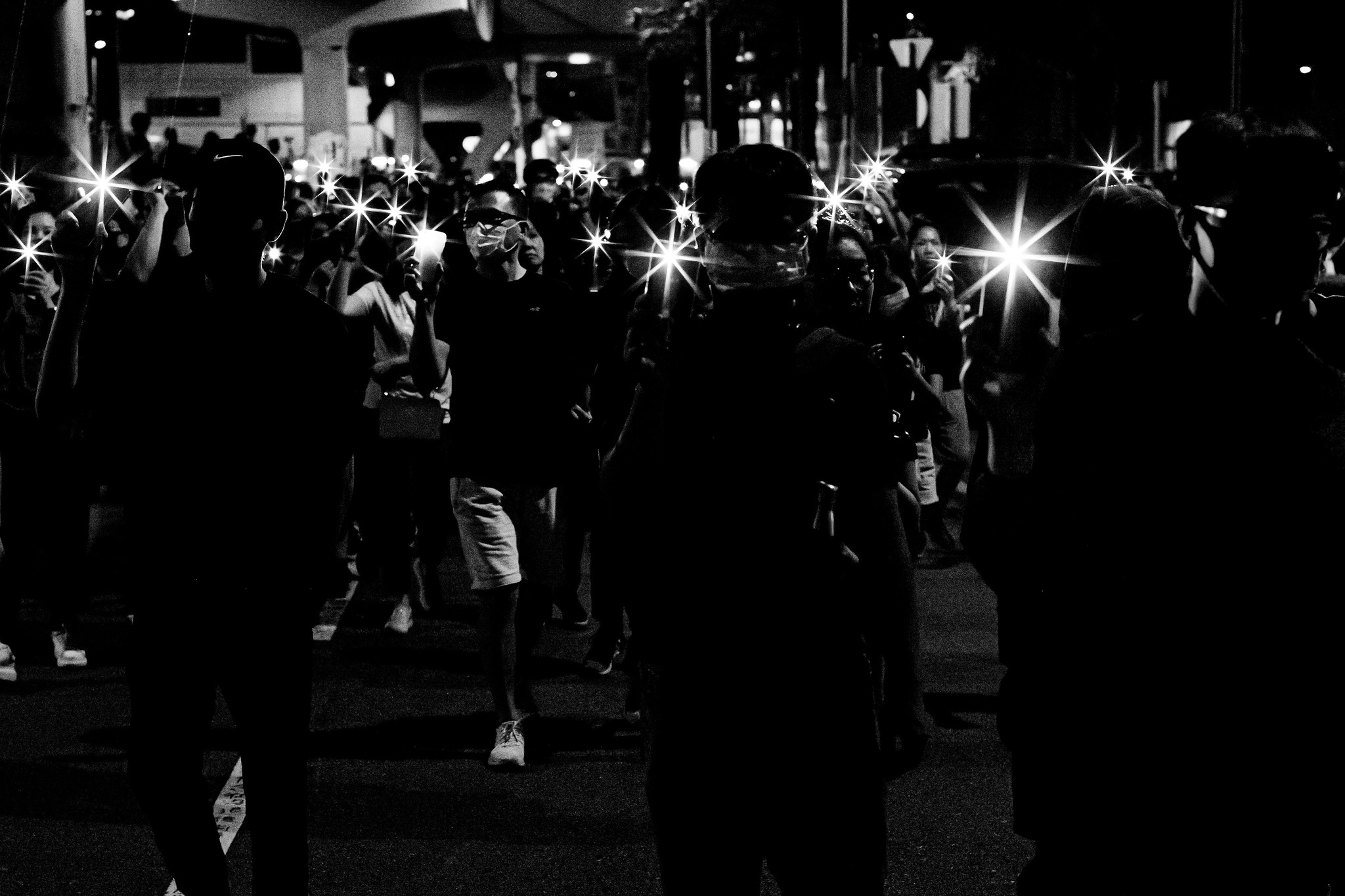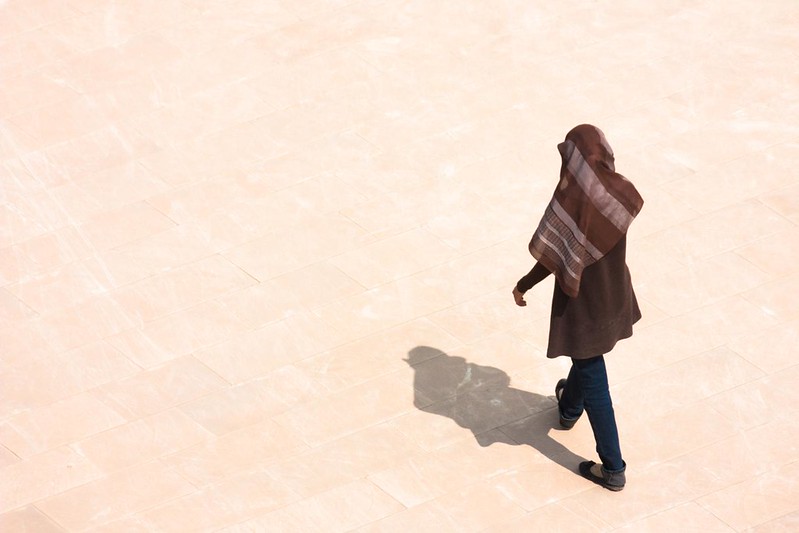“God created this earth with men and women. If God wanted them to exist in different realities, we should divide the Earth in half: men on one side, women on the other,” says Georgetown’s Imam Yahya Hendi, the university’s first Muslim chaplain. “But God wanted them to exist to be social with each other.” While suggesting that we draw a chalk line down the center of our globe might cause a chuckle or two, when it comes to mosques in the United States, there does, in fact, exist a palpable phobia of the two genders freely mixing.
We asked nine Muslim professionals, students and mothers (between the ages of 21 to 45) to recount their experiences in mosques and tell us to what extent that the planetary analogy applied. Their answers suggest that unfortunately the public space of a grocery store would provide more familiarity and comfort with the opposite sex than would a mosque.
How comfortable are you (a) Entering a mosque as an individual? (b) Speaking with your mosque’s leadership?
“I’m always slightly uncomfortable entering a mosque-as compared to entering a store or restaurant. This is probably because I feel judged by my fellow Muslim brothers and sisters. I worry if I’m dressed appropriately or am being judged for walking in alone. I fight these feelings though because it’s important to attend the local mosque whenever possible. And I usually feel great once I’m inside and [begin to] greet people.”- Yasmina Blackburn, second generation Muslim
“There is a mosque I attend, and there are a group of about five men who are consistently the prayer leaders, but I have never approached them, nor am I comfortable doing so having been reprimanded by one of them, and having heard the nearly unintelligible rants of another. The other three also seem distant and unapproachable. [This experience greatly contrasts with a nearby mosque regarding Alex’s interaction with its leadership. The leadership of the neighboring mosque discourages the physical barrier during Jummah prayers, encourages youth participation, and engages in interfaith dialogue, headed by Imam Yahya Hendi who works within the larger Georgetown Campus Ministry.] “I am completely comfortable approaching my peers or other older members of the community to address issues about the space and I feel comfortable approaching the ministry.” – Alexander Porcelli, young Muslim professional
“I do not wear a hijab or dress in a manner that most Muslims would call ‘modest.’ Therefore when I enter a mosque and put on a headscarf before my prayer, I feel as though other people are looking at me and judging me. Most Muslims (both men and women) have a visual picture of how a good Muslim woman should look,and they tend to judge women who do not fit the picture, without even trying to understand their social and cultural background. It is this judgmental attitude that makes me feel uncomfortable when entering most mosques. I would feel more at ease if women and young people of my age more regularly visited mosques. I had some unpleasant experiences which led me to conclude that some mosques in the U.S. are hostile to women. For instance, at the Islamic Center of Washington, I was yelled at for standing outside the mosque without a hijab, and was scolded for walking fast and ‘immodestly.’”- Laila Zulkaphil, graduate student.
What responsibility does the mosque have in ensuring this public space facilitates the following community needs: (a) Prayer; (b) Discussion; (c) Engaging the family unit; and (d) Encouraging women’s participation?
“The mosque has a responsibility to facilitate all of the above. However, we should not forget that the mosque is first and foremost a sacred space for remembering and worshipping God. Any inter-faith dialogues, lectures and workshops should be conducted in a manner that does not undermine the mosque’s primary purpose of worship and does not disturb others who are praying.” – Laila
“Public spaces ought to provide the setting for emotional support and the exchange of ideas. A mosque should not only help its visitors find God through individual worship, but should offer the community members the chance to encounter God in their interactions with one another. This is why interactive programs geared towards families or women are important. A mosque must also reflect a welcoming attitude to those unfamiliar with the Muslim tradition, and allow new individuals to come and experience the [local Muslim] community. The space needs to reflect hospitality, equality and mutual respect.” – Alexander
Is there a difference between how women are treated in mosques in the U.S. versus mosques in other countries? Please give an example.
“There is a big difference between the role of the mosque in the West and in a Muslim country like Syria. I’ve never attended a Friday prayer, an Eid prayer or even a taraweeh prayer [in the month of Ramadan] in Syria. Mosques over there are mainly for men’s prayers and halaqas [group discussions]. In the United States, mosques are multipurpose centers for worship and cultural interactions. They unite the community and help them integrate with non-Muslims. For example, in our mosque we hold monthly potlucks and frequent interfaith events where we interact with other churches from the neighborhood.” – Lama Al-Moazen, Sunday school teacher
“In my experience living in England in the 1990s, there were no women’s sections at the smaller mosques. Only the largest one had an upstairs room for women, but I never saw women at the mosque aside from Eid prayer. I grew up under the impression that women didn’t go to the mosque, period. I had the same experience when I went to Pakistan. The United States was the first time I even saw women at the mosque.” – Omair Javed, third year medical student
“On my trips to Indonesia and Malaysia, I got the sense that women attend mosque services with no problem. In Morocco some local women did not wear head scarves and were in the mosque, and nobody went crazy about it. Although I did not like that they did not cover appropriately, I liked that no one insulted them. Turkey and Iran were wonderful. We prayed in every mosque we passed by, and I sensed that they are in general welcoming to women. In Saudi Arabia, I was insulted, talked to in disrespectful way, asked to move away from the Kaaba, and not allowed to finish Tawaf [the circling of the Kabbah] by male guards at the Grand Mosque. Men were definitely treated as the superior race. Even my 12 year old son got more respect than I did. The same [was true] in the Prophet’s Mosque.” – Dr. Randa Loutfi, Council of Islamic Organizations of Greater Chicago (CIOGC) Interfaith Committee.
In reviewing these responses, there is a gap between what we expect and how it translates. Former Islamic Society of North America President, Imam Abdul Malik Mujahid noted in a recent op-ed the perceived and ritualized exclusion felt by women foreshadows a larger challenge in the long term. He writes, “We must change and change fast. We are losing more and more young Muslim women. Some have chosen to never again associate with the Masjid or the Muslim community after feeling excluded and demoralized because of their gender.”
Regarding the rising trend of the physical barrier, which signifies the root of public space challenges, Imam Hendi challenges this separation by revisiting history: Before the Hijra, Prophet Muhammad met with 73 men and 2 women among the Ansar to symbolize the political non-segregated allegiance in building the new Muslim community. Dr. Loutfi, Mrs. Al-Moazen, Mrs. Blackbrun, Laila, and all 5 of our male respondents recounted at least one story of discomfort felt by their moms, sisters, or female friends entering inhospitable mosques. Hence, “if we claim that women are the most important in raising the next generation and engaging civil society, limiting women from the public space—physically, civically, emotionally, and spiritually—is not conducive to meeting the goal of building community,” to paraphrase Imam Hendi.
As young Muslim-American women, Ramah and I concur. Since we cannot divide the planet, or the mosque, we need more proactive engagement at the mosque leadership level. The grassroots level of writing and discussing the public space challenges calls for including different voices, not pushing for an echo chamber in dwindling public spaces.
(Photo: David Dennis)
Mehrunisa Qayyum and Ramah Kudaimi are Contributing Writers to Altmuslimah. This is part two of a three part series.















